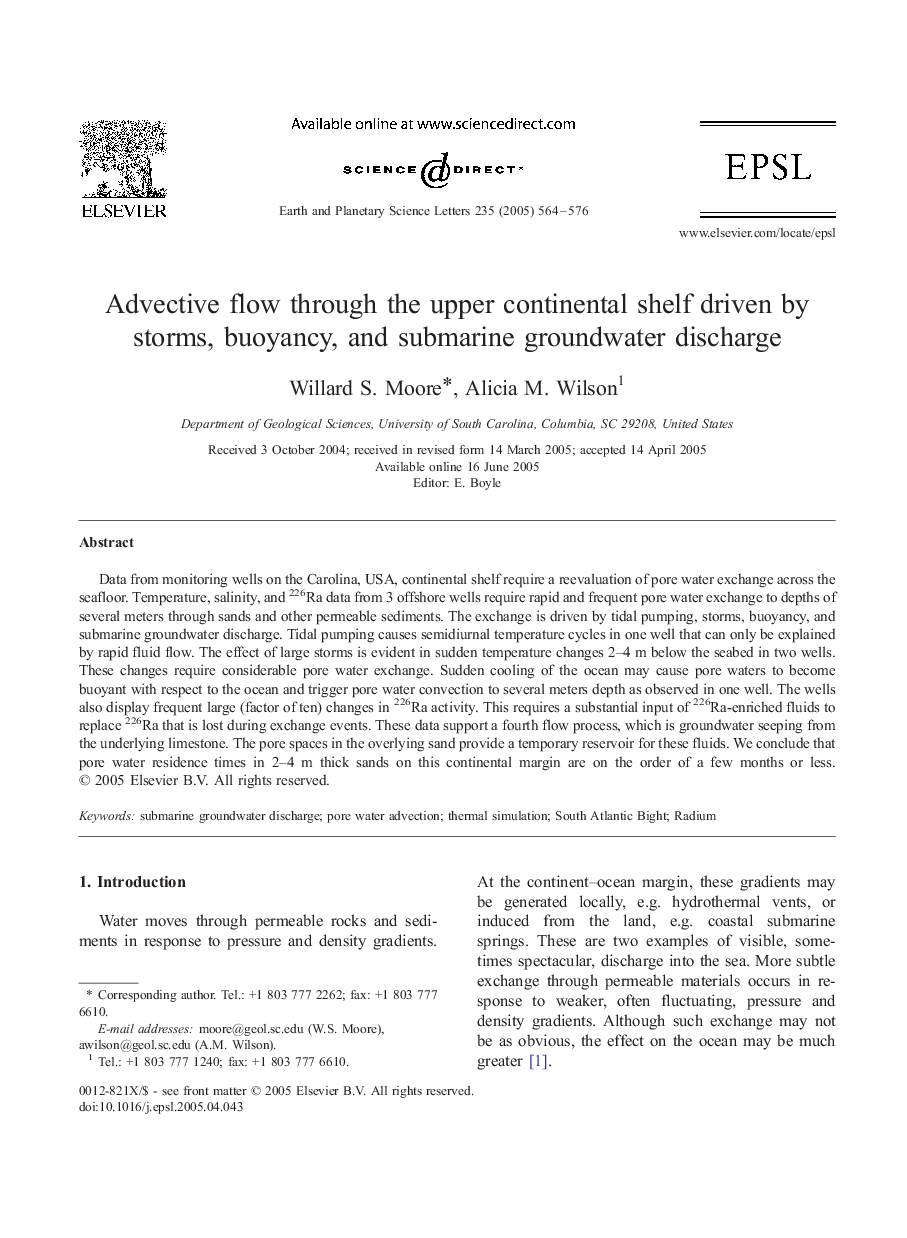| Article ID | Journal | Published Year | Pages | File Type |
|---|---|---|---|---|
| 9522211 | Earth and Planetary Science Letters | 2005 | 13 Pages |
Abstract
Data from monitoring wells on the Carolina, USA, continental shelf require a reevaluation of pore water exchange across the seafloor. Temperature, salinity, and 226Ra data from 3 offshore wells require rapid and frequent pore water exchange to depths of several meters through sands and other permeable sediments. The exchange is driven by tidal pumping, storms, buoyancy, and submarine groundwater discharge. Tidal pumping causes semidiurnal temperature cycles in one well that can only be explained by rapid fluid flow. The effect of large storms is evident in sudden temperature changes 2-4 m below the seabed in two wells. These changes require considerable pore water exchange. Sudden cooling of the ocean may cause pore waters to become buoyant with respect to the ocean and trigger pore water convection to several meters depth as observed in one well. The wells also display frequent large (factor of ten) changes in 226Ra activity. This requires a substantial input of 226Ra-enriched fluids to replace 226Ra that is lost during exchange events. These data support a fourth flow process, which is groundwater seeping from the underlying limestone. The pore spaces in the overlying sand provide a temporary reservoir for these fluids. We conclude that pore water residence times in 2-4 m thick sands on this continental margin are on the order of a few months or less.
Related Topics
Physical Sciences and Engineering
Earth and Planetary Sciences
Earth and Planetary Sciences (General)
Authors
Willard S. Moore, Alicia M. Wilson,
